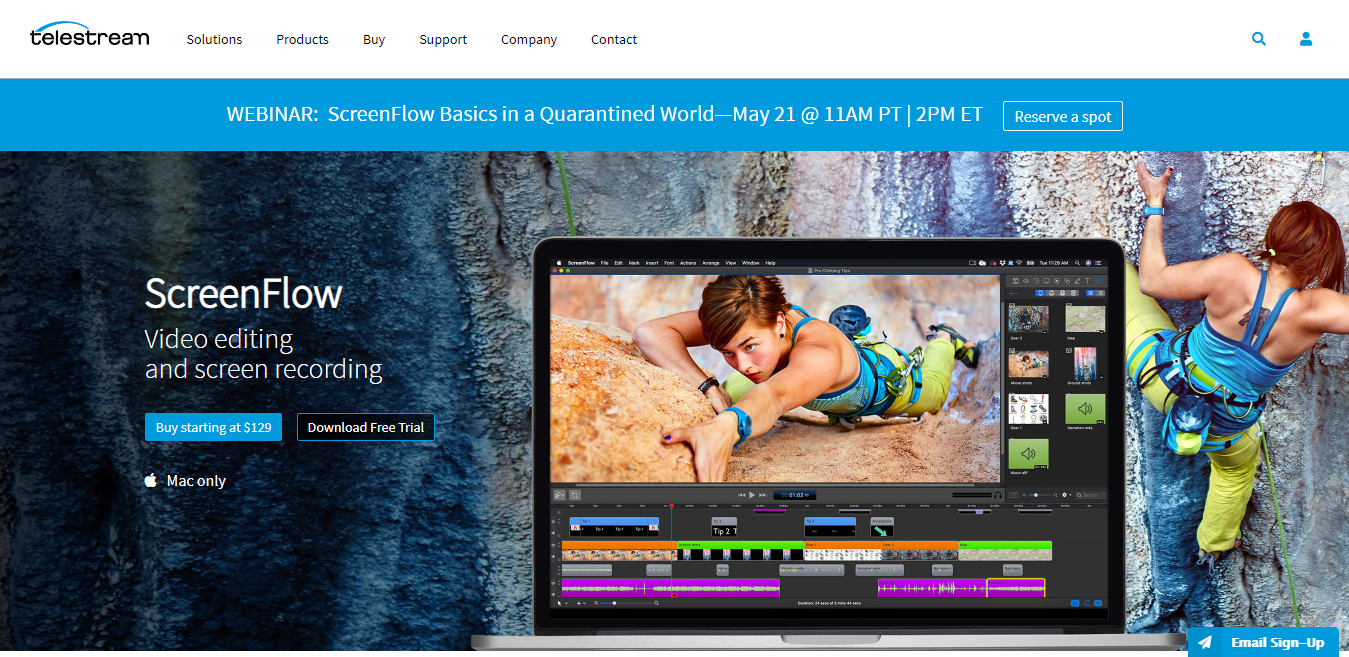

- #Screenflow 8 versus camtasia 2019 mac os#
- #Screenflow 8 versus camtasia 2019 320kbps#
- #Screenflow 8 versus camtasia 2019 update#
#Screenflow 8 versus camtasia 2019 320kbps#
I self-host and stream my videos so that I can give my listeners full 320kbps hi-res audio in the videos.
#Screenflow 8 versus camtasia 2019 update#
Will it be full M1 native or on Rosetta 2? I mean will it make use of all performance and speed benefits of the M1 chip natively while editing and during multi-pass x264 exporting both? And please do update x264 too to the latest version as the very latest x264 versions are giving much better export quality at the same bitrates than the previous x264 versions, in Handbrake at least. Some may say they prefer partial-screen capture because that’s what they’re used to using.CraigS Thanks for this heads up. (See “ Make your video files smaller” and “ Apple H.264 vs x264 – better exports” for ideas and tips.) Also, by playing with data rates, and frame rates (and even codecs) you can achieve very small file sizes with very acceptable quality. In our case, ScreenFlow uses a “proprietary” very efficient compression method that enables smaller file sizes. If you’re capturing the full screen, rather than just the portion or size you need, opponents say you’re creating bigger-than-needed files wasting valuable hard drive space. The arguments I’ve seen against full-screen capture mainly revolve around file size.

In other words it’s creating a high resolution “master” capture that you can then export to other sizes and codecs as needed. If you had captured it full screen, you would have the flexibility to crop it and create a 320×240 video, and then use that same recording at a different size in a different project, saving a lot of time and hassle. But what if you later decide to use that video as part of a different HD project? You’ll have to re-record your video at a bigger size, or risk inserting a very low quality/low resolution video into your project. Using a partial screen recorder, you’d set your window at that size, then record, then you’d have your specifically-sized video all ready to go after recording. For example, say you create a video specifically for a 320 x 240 output. Recording the full screen gives you breathing room to change your mind after you’ve recorded, or use the entire video at a different size later, without having to re-record. But, in my opinion, it’s a lot easier to spend time zooming and cropping in post-production, than it is to re-record whole segments upon realizing a particularly important item on screen did not get recorded!ģ) Full-screen capture gives you a versatile “master” recording. Using a different technology would mean losing some major features in ScreenFlow.Ģ) Full-screen capture requires less pre-planning: With full-screen capture, you’ll often end up spending less time planning your screencasts prior to recording, and more time doing edits during post-production. ScreenFlow’s ability to highlight a foreground window is one example of a feature enabled by full-screen capture. ScreenFlow captures the entire screen which allows it to take advantage of certain features specific to the way the Macs handle graphics – features that otherwise wouldn’t be possible if it only captured partial screen.
#Screenflow 8 versus camtasia 2019 mac os#
But capturing the full screen is a very deliberate product feature in ScreenFlow, and there are a couple of reasons for that:ġ) Full-screen capture enables certain other capabilities: The very nature of ScreenFlow is that it is built around Mac OS technology. You can then crop to your desired screen size or window size afterward.

ScreenFlow, by design, captures the entire screen during recording. I have seen this topic come up in our forums, and also as a feature request, so I thought I’d take a moment to explore some of the reasons ScreenFlow is the way it is. Partial-screen capture requires that you size and position a “viewport” or recording window prior to recording, and only things in that window get recorded. Full-screen capture is just that: your entire screen gets recorded, then you crop and edit in post-production. There is some debate among screencasters about what’s better: full-screen capture or partial-screen capture.


 0 kommentar(er)
0 kommentar(er)
